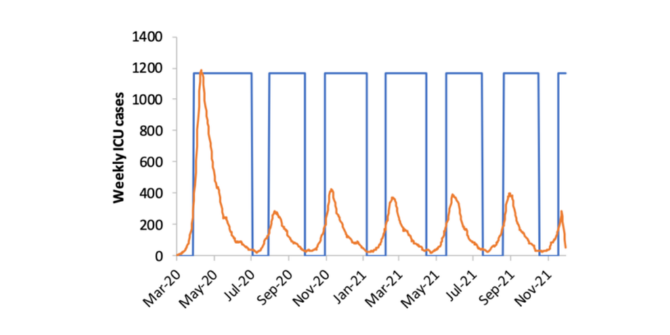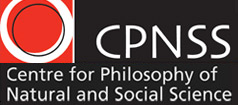Scientific advice cannot be completely neutral or independent, says Jonathan Birch. But records from autumn 2020 suggest that the Cabinet Office leant on SAGE to build in optimistic assumptions about the government’s ability to control the pandemic.
Scientific advice is politically neutral if it avoids politically contested value judgements, such as the economic cost that should be accepted to save one life. Scientific advice is politically independent if it is formulated without constraint or influence from political actors, such as ministers. Should scientific advice in emergencies be neutral and independent?
Neutrality and independence sound like good things. In the real world, however, I don’t think scientific advice is ever fully neutral or fully independent. How could it be? And would we even want it to be? We wouldn’t want advice to be formulated in a vacuum, with no input from policy-makers at all. We want policy-makers to be able to pose questions to advisers, and to provide input about what policy options are on the table.
So our question is really: in what ways and to what degree should scientific advice in emergencies be neutral and independent? And how can we disentangle harmless departures from perfect neutrality and independence from more troubling departures? These questions don’t have easy answers. We need to look at real cases, such as the UK’s response to COVID-19, and learn from them. That is my aim here.
Neutrality: should scientific advisers make value judgements?
The most important advisory body involved in the UK’s response to COVID is SAGE: the Scientific Advisory Group for Emergencies. The SAGE minutes and papers give a general impression that SAGE tries to be politically neutral. Occasionally, SAGE has departed from neutrality in subtle, perhaps unintended ways. For example, on 3 February 2020 it noted that “to prevent imported infections … would require draconian and coordinated measures”. I do not read “draconian” as a fully neutral term. It suggests that to close borders would be excessive.
On 11 February 2020, the SAGE minutes record that “it is not possible for the UK to accelerate diagnostic capacity to include COVID testing alongside regular flu testing in time for the onset of winter flu season 2020-21”. This is framed as a fact about operational capacity, but there is an implicit political judgement involved in the use of the term “not possible”. Tacit assumptions about what is and is not politically possible are in play. In this early stage of the crisis, SAGE assumes that it is not politically possible to make COVID testing a major national priority. This was not only possible – it actually happened.
So, while SAGE appears to aspire to neutrality, it does not always succeed. Yet I’m not convinced that neutrality is even desirable in extremis. I take it to be desirable in normal times, at least when the judgements involved are momentous, due to worries about democratic accountability for momentous value judgements. In extremis, however, it can be reasonable to put worries about democratic accountability to one side.
In their paper of 16 March, the Imperial COVID-19 Response Team took it upon themselves to make momentous political judgements about which strategies were “viable” or not, and they judged that averting healthcare system collapse was more important than keeping schools open. This value judgement is implicit in their conclusion that “suppression is the only viable strategy at the current time”, since they also concluded that effective suppression would require school closures. SAGE agreed. It did not act unreasonably in doing that. This is an example of advice that is both scientifically sound and value-laden. Value-ladenness is not always a problem.
What strikes me as more desirable in extremis is that departures from neutrality are communicated as such to policy-makers. When something is judged politically (im)possible or (un)viable, this value judgement should be explicitly conveyed, so that it can be challenged if necessary. In hindsight, and given what came later, we can see that the judgement that it was “draconian” to stop flights on a large scale deserved to be challenged, as did the judgement that mass testing was “not possible”.
Independence: should political advisers be in the room?
Government employees are inevitably present at SAGE meetings, because the Chief Scientific Adviser (Sir Patrick Vallance) and the Chief Medical Office (Chris Whitty) are themselves government employees. Moreover, a secretariat must be on hand. I do not think this is undue influence. More contentiously, advisers directly employed by the Office of the Prime Minister have been present at the vast majority of SAGE meetings from 20 February 2020 onwards.
This was a source of controversy when it first became widely known. It was criticised by Sir David King, a former Chief Scientific Adviser who went on to found a group provocatively called “Independent Sage”. This group has offered independent advice on the pandemic – stressing that it, unlike SAGE, is genuinely “independent”.
Were these complaints reasonable? When the SAGE minutes were published, an addendum was added to all the minutes containing the following statement, emphasising that only “scientific experts” provide evidence and advice:
There are three categories of attendee. Scientific experts provide evidence and advice as part of the SAGE process. HMG [government] attendees listen to this discussion, to help inform policy work, and are able to provide the scientific experts with context on the work of government where appropriate. The secretariat attends in an organisational capacity.
We should make allowances for the fact that, in a pandemic, advice may need to be implemented with exceptional speed. Bringing in a recommended measure the same day, rather than several days later, could save thousands of lives. It seems reasonable that political leaders or their representatives should be on hand to hear the advice as soon as it is agreed.
Yet it’s still a problem if political leaders or their political advisers are present throughout the whole meeting in which advice is discussed, formulated and agreed. We need to bear in mind that there is a long history of policy-makers using uncertainty and dissensus among scientists to justify delay, or to justify cherry-picking the uncertain scientific claims they want to believe (see e.g. Orestes and Conway’s book Merchants of Doubt).
Given this background, a scientific adviser may want to express uncertainty or a dissenting opinion in private, to other advisers, without decision-makers present. One can easily imagine a discussion in which a dissenting view is expressed but then met with opposing evidence, so that a consensus view gradually emerges. If a political adviser is present in the room, they will hear all the disagreement and discord that leads to the consensus – making advisers fearful of the consequences of expressing dissenting views.
Moreover, advisers need to be able to discuss how best to communicate their advice. For example, they need to be able to discuss the form of advice (Should we make a single, unambiguous recommendation?). There needs to be space for remarks such as: “We need to send a simple, direct message to decision-makers, because what we have now is too nuanced and complicated.” These discussions are likely to be inhibited if the intended target of the advice is either present or directly represented in the room.
These problems still arise even if the political advisers present in the room say nothing. The concern is not only that they will exert undue influence by speaking. Even if they don’t speak at all, their mere presence gives scientific advisers an incentive to remain quiet on certain topics. They have an incentive not to express dissenting views, or to raise sources of uncertainty, in a way that might obstruct the take-up of advice.
Is there a way to avoid these problems while also recognising the need for urgent implementation? Here is a proposal: at least part of any meeting of a group of scientific advisers should take place without political leaders or their political advisers present in the room, to allow time for dissenting opinions to be expressed, for agreement to be reached, and for discussion of how to communicate the agreed advice to decision-makers. It may still be reasonable to dedicate part of the meeting to communicating the agreed advice to political leaders and their advisers.
Independence: should politicians have input regarding modelling assumptions?
As I discussed in Part 1 (and in a draft paper), the concept of a “Reasonable Worst-Case Scenario” (RWCS) has played a crucial role in the UK’s response. In May 2020, a new RWCS was drawn up to guide planning for the autumn. On 29 October, it was leaked to The Spectator. In short, the new RWCS was as follows (italics added):
“The scenario modelled incidence continuing as per current trends until the end of July 2020, with all non-household contacts assumed to be constant with current levels. Incidence is then assumed to double once by the end of August 2020, and double again during the first two weeks of September. At this point, social contacts are reduced that reduce R to approximately 1, keeping infection levels steady until the end of October. Two-week doubling times return throughout November (i.e. incidence quadruples through November), after which policy measures are put in place to reduce non-household contacts to half of their normal pre-March 2020 lockdown levels, while all schools contacts are assumed to be maintained. These measures are sustained until the end of March 2021.”
Reality has ended up resembling this RWCS in some respects. However, one part of the RWCS conspicuously did not happen: the government did not take effective measures in September to reduce R to approximately 1, and did not keep infection levels steady until the end of October. The measures actually taken were insufficient. That assumption is a strikingly weird thing to see in a “reasonable worst case”. Did scientific advisers really regard this as a reasonable worst case?
What happened here? A SPI-M consensus statement from 16 September notes that “the RWCS agreed with ministers assumed that policy interventions would be made in mid-September to halt the rise in infections”, suggesting some degree of negotiation with ministers. On 3 November, Vallance explained the process to the Science and Technology Select Committee in a way that seemed to further marginalise the role of scientific expertise: “We model what the Civil Contingencies Secretariat sees as a reasonable worst case and that is then modelled by the SPI-M modellers”.
In short, the Cabinet Office’s Civil Contingencies Secretariat seems to have requested that the RWCS build in optimistic assumptions about the government’s decisiveness and the effectiveness of its policies. The result was a set of planning assumptions that could hardly be called a “worst case” in any sense. The documents currently available don’t tell us about the precise role of ministers (and which ministers) in requesting these assumptions – on this, we can only speculate.
What can we learn from this? An effective pandemic response is hindered if planning assumptions are negotiated between scientific advisers and political actors, with political actors pushing for unrealistic assumptions and influencing the modelled values of fundamental epidemiological parameters, such as R. Clear limits need to be set regarding which aspects of modelling political actors can and cannot influence.
The lesson is not that policy-makers should have no input at all. What’s needed is a clear framework for separating reasonable input (e.g. a description of the interventions they are willing to implement) from unreasonable input (e.g. an assertion that the unspecified interventions, whatever they may be, will have a particular epidemiological effect). If political leaders insist that planning assumptions for a “worst case” build in optimistic assumptions about their own actions, that is a problem.
← Part 1
Dr Jonathan Birch is an Associate Professor of Philosophy at the LSE and Principal Investigator (PI) on the Foundations of Animal Sentience project. In addition to his interest in animal sentience, cognition and welfare, he also has a longstanding interest in the evolution of altruism and social behaviour.




